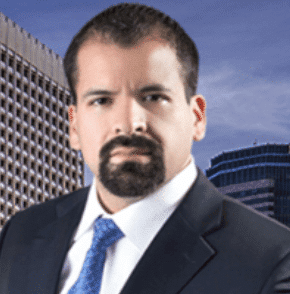In September, the Los Angeles County Commission on Human Relations (LACCHR) issued its annual study of the hate crimes reported in Los Angeles County in the previous year. After a decline of seven years, hate crimes in Los Angeles increased by 24 percent in 2015 over 2014, from 390 to 483 reports. Can social media help the police prevent hate crimes? Here in Los Angeles, that question is about to be answered.
A three-year test will be conducted to determine if law enforcement agencies can predict and prevent hate crimes by closely monitoring social media activity. A team of British researchers with Cardiff University’s Social Data Science Lab will work jointly with the Rand Corporation to monitor millions of “tweets” in and about Los Angeles. The researchers will try to identify patterns that indicate real crimes are about to happen. The U.S. Department of Justice is spending $600,000 on the three-year “test.”
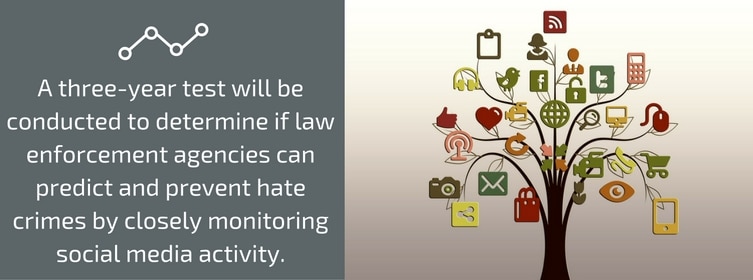
Matthew Williams, a professor of criminology at Cardiff and the director of the Social Data Science Lab told the Los Angeles Times that the research may provide law enforcement with the tools to predict when and where hate crimes are likely to happen. “The insights provided by our work will help U.S. localities to design policies to address specific hate crime issues unique to their jurisdiction and allow service providers to tailor their services to the needs of victims, especially if those victims are members of an emerging category of hate crime targets.”
HOW MANY HATE CRIMES ARE COMMITTED IN THE U.S.? HOW MANY IN L.A.?
The Social Data Science Lab’s work in the U.K. discovered that tweets on Twitter could be analyzed to identify and study communities where hate speech emerges. Does hate speech lead to hate crime, or does it instead function as an outlet allowing people to vent – and dissipate – hateful feelings and impulses? The U.S. Justice Department estimates that in 2012, more than 290,000 hate crimes – crimes of violence or against property – were committed in the U.S.
In Los Angeles County in 2015, the majority of hate crimes targeted African Americans, who represent only about 8.3 percent of the county’s residents but constituted 58 percent of the hate crime victims. Hate crimes against a number of other groups also increased 2015. Victims included Mexicans and Mexican-Americans, Jews, gay men, lesbians, Muslims, Asian Americans, and transgender persons. Anti-Muslim hate crimes spiked in November and December 2015 after terror attacks in San Bernardino and Paris.
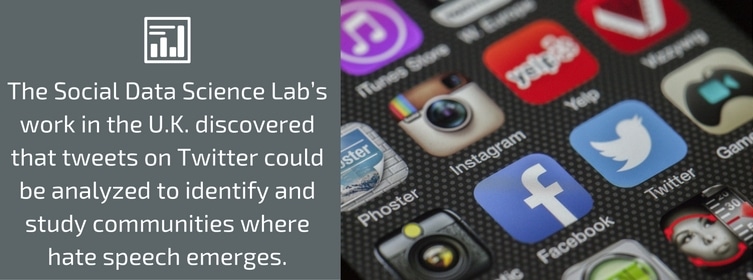
Monitoring social media to obtain information about crime “is a great idea in the abstract. But it is not the panacea you might think,” according to Brian Levin, the executive director of Cal State San Bernardino’s Center for the Study of Hate and Extremism. He told the Los Angeles Times, “The problem is the correlation and reliability,” and he added that not all hate groups are active online, “so examining social media as a predictor can be a bit like having one screwdriver and sometimes it doesn’t work.”
DO OTHER CITIES CONDUCT PREDICTIVE POLICING?
What is now called predictive policing is already a practice of the Los Angeles Police Department. Every Los Angeles criminal defense attorney knows and deals with predictive policing and its results. The LAPD employs a predictive algorithm to send officers to sites where crime pattern analysis suggests that crimes are apt to happen. The LAPD isn’t alone. Predictive policing software called Hunchlab is already used in Philadelphia and being tested in New York and Miami. Hunchlab predicts crime based on factors like the time, date, weather, economy, and crime history of a community to help police agencies deter and react more effectively to crime.
Researchers are particularly interested in Los Angeles County for several reasons. The county produces a huge amount of social media data, and more data allows the software to predict crime activity with greater accuracy. “Predictive policing is a proactive law enforcement model that has become more common partially due to the advent of advanced analytics such as data mining and machine-learning methods,” says Dr. Pete Burnap, a senior lecturer at Cardiff University’s School of Computer Science and Informatics.
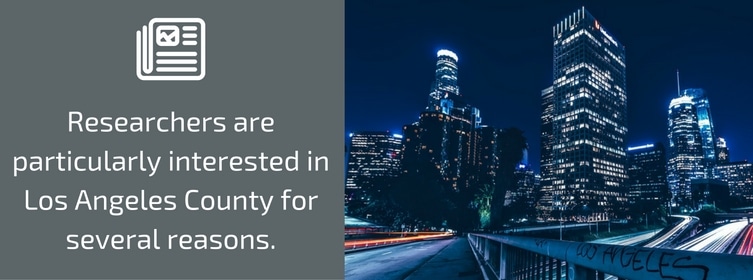
In the past, predictive policing simply matched historical crime records with locations and then made a best guess, but Twitter works in real time, and predictive computer programs are looking for and attempting to identity language – specific words and phrases – that point to crime about to happen. Although they have had some limited success battling hate crime in the U.K., the team from Cardiff is fashioning a completely new hate speech algorithm for Los Angeles due to the culture and language differences.
Along with crime forecasting, researchers want to shed more light on hate crimes that now go unreported. Meagan Cahill, a senior researcher for the Rand Corporation, told the Times, “We know that official reports of hate crime from police probably underestimate how common hate crime really is – but we don’t really know by how much, or which types of hate crimes are most seriously underreported. Using Twitter data from Los Angeles County as a test case, this research will help create better knowledge about hate crime. And we hope it will ultimately contribute to more hate crime prevention by police and other agencies alike.”
DOES PREDICTIVE POLICING HAVE CRITICS?
Not everyone is on the bandwagon for predictive policing. The Leadership Conference on Civil and Human Rights has organized a coalition that includes the ACLU, the Brennan Center for Justice, and the NAACP. A statement issued by that coalition in September says, “the data driving predictive enforcement activities – such as the location and timing of previously reported crimes, or patterns of community- and officer-initiated 911 calls – is profoundly limited and biased.” And a study by Upturn, a tech consulting group that focuses on social issues, says predictive policing “may reinforce disproportionate and discriminatory policing practices.”
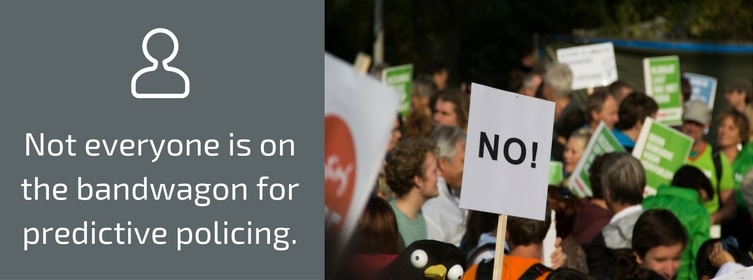
Cops have been drawing maps to predict crimes since the nineteenth century, so in at least one sense, predictive policing isn’t anything new – it’s simply more complicated than it used to be. Criminal suspects in L.A. still need to have their rights defended by a Los Angeles criminal defense attorney – that’s not going to change. And if predictive policing programs like Hunchlab do not deliver the expected results, law enforcement agencies in Los Angeles and elsewhere will find and use other tools in their never-ending efforts to predict crimes before they happen.

